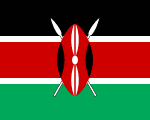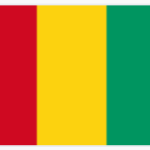Guinea-Bissau is a small country in West Africa, with a population of about 2 million people. It has a rich and diverse history, culture, and natural environment, but also faces many challenges such as poverty, political instability, and environmental degradation.
Guinea-Bissau’s history is marked by the influence of different empires and colonial powers. The region was part of the ancient kingdom of Kaabu, which was a vassal state of the Mali Empire in the 13th and 14th centuries. The Kaabu kingdom was composed of various ethnic groups, such as the Mandinka, Balanta, Fula, and Jola, who maintained their own languages and traditions. The kingdom resisted the expansion of the Songhai Empire in the 15th century, but eventually collapsed in the 18th century due to internal conflicts and external attacks.
The Portuguese were the first Europeans to explore the coast of Guinea-Bissau in the 15th century, and established trading posts and forts along the coast and islands. They were mainly interested in the lucrative slave trade, which lasted until the 19th century. The Portuguese also tried to convert the local population to Christianity, but met with resistance and hostility from the Muslim and animist communities. The Portuguese control over the territory was weak and contested by other European powers, such as the French, British, and Dutch.
In the 19th century, Portugal formally claimed Guinea-Bissau as a colony, known as Portuguese Guinea. However, it faced difficulties in imposing its authority over the interior regions, where many ethnic groups maintained their autonomy and resisted colonial rule. The Portuguese launched several military campaigns to pacify and subjugate the local population, which resulted in violence, repression, and human rights violations. The most notable resistance leader was Amílcar Cabral, who founded the African Party for the Independence of Guinea and Cape Verde (PAIGC) in 1956. Cabral led a guerrilla war against the Portuguese from 1963 until his assassination in 1973. His successor, Aristides Pereira, declared the independence of Guinea-Bissau on September 24, 1973, which was recognized by Portugal after the Carnation Revolution in 1974.
Guinea-Bissau’s post-independence period has been turbulent and unstable. The country has experienced several coups d’état, civil wars, political assassinations, and military interventions. The most recent coup occurred in 2012, when a group of soldiers ousted President Malam Bacai Sanhá and Prime Minister Carlos Gomes Júnior. A transitional government was formed under Manuel Serifo Nhamadjo, who organized elections in 2014. José Mário Vaz won the presidential election, while Domingos Simões Pereira became the prime minister. However, their relationship soon deteriorated due to disagreements over economic policies and corruption allegations. Vaz dismissed Pereira in 2015, triggering a political crisis that lasted until 2019. In that year, Umaro Sissoco Embaló won the presidential election against Pereira in a disputed run-off. Embaló took office in February 2020 after dismissing Vaz’s government and appointing Nuno Nabiam as prime minister.
Guinea-Bissau’s economy is largely based on agriculture, fishing, and mining. The main crops are cashew nuts, rice, peanuts, palm oil, cotton, and cassava. Cashew nuts are the main export product and source of income for many farmers. The country also has potential reserves of oil, natural gas, bauxite, phosphate, gold, and diamonds. However, Guinea-Bissau’s economic development is hindered by poor infrastructure, lack of diversification, high dependence on foreign aid, and widespread corruption. The country is also a transit point for drug trafficking from Latin America to Europe.
Guinea-Bissau’s culture is a blend of African and Portuguese influences. The official language is Portuguese, but most people speak one or more local languages or dialects. The most widely spoken are Guinea-Bissau Creole (a Portuguese-based creole), Fula (also known as Pulaar or Fulfulde), Mandinka (also known as Mandingo or Mandinga), Balanta (also known as Balante or Balant), Jola (also known as Diola or Joola), Manjak (also known as Mancanha or Mankanya), Papel (also known as Pepel or Papei), Serer (also known as Sereer or Seereer), Soninke (also known as Sarakole or Sooninkan), Bijagó (also known as Bissago or Bidyogo), Nalu (also known as Nalou or Nalu), Biafada (also known as Biafar or Biafara), and Mankanya (also known as Mancagne or Mancanha). The main religions are Islam, Christianity, and traditional African beliefs. The country has a rich and diverse musical heritage, with genres such as gumbe, tinga, kussundé, brosca, and djambadon. The country also has a vibrant and colorful art scene, with styles such as batik, pottery, wood carving, basketry, and mask making.
Guinea-Bissau’s natural environment is characterized by a variety of ecosystems, such as mangroves, savannas, forests, wetlands, and islands. The country is home to many species of plants and animals, some of which are endemic or endangered. The country has several national parks and protected areas, such as the Orango National Park, the João Vieira and Poilão Marine National Park, the Cantanhez Forest National Park, the Dulombi-Boé-Tchetche National Park, and the Cacheu River Mangroves Natural Park. The country is also part of the Mano River Union and the West African Biodiversity and Climate Change (WA BiCC) program, which aim to conserve and manage the region’s biodiversity and natural resources.
Guinea-Bissau is a country with a lot of potential and challenges. It has a rich history, culture, and natural environment, but also faces problems such as poverty, political instability, and environmental degradation. The country needs more support from the international community and more cooperation from its own people to overcome its difficulties and achieve its goals.








